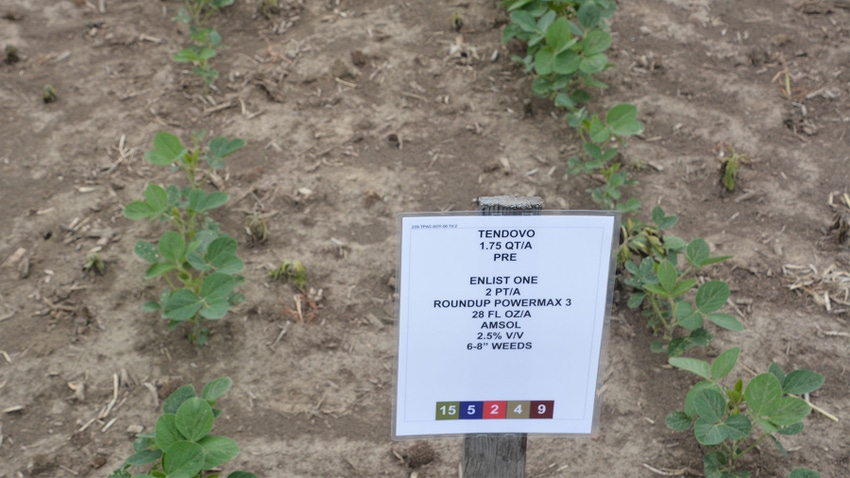
New herbicides are evaluated in university test plots during the growing season. “We rate them for efficacy on control of various weeds, and those results help us develop efficacy tables in the Weed Control Guide,” explains Bill Johnson, Purdue Extension weed control specialist.
While Johnson and others evaluate plots in Indiana, colleagues do the same in Ohio, Illinois and Missouri. Weed specialists collaborate to produce a weed control guide so growers from all four states can use it with confidence.
Newer soybean residual herbicides
Recently, Johnson demonstrated using tables to find chemicals to augment the newest soybean residual herbicides on tough weeds.
“Many farmers and crop advisers ask this question: How do I get more control of waterhemp with soil-applied herbicides?” Johnson says. “To step up waterhemp and Palmer amaranth control, metribuzin is an option. So are Group 15 herbicides, including Dual, Warrant, Outlook and Zidua.
“You could also consider Group 14 herbicides, including Authority and Valor. However, herbicide labels typically don’t allow more than one Group 14 product in the mix. So, if you have a Group 14 in the premixed product, consider either a Group 15 herbicide or metribuzin.”
Here is a closer look at each herbicide:
Intimidator 4.81L at 2.8 pints per acre. Ingredients are 1.24 pints of Dual II Magnum 7.64 EC, 5.84 ounces of metribuzin 75DF and 0.93 pint of fomesafen 2L. Enhance giant ragweed control with FirstRate if giant ragweed is not ALS resistant. Past performance in that field may be your best guide for knowing if the weed is ALS resistant.
Reflex or other herbicides with fomesafen as an active ingredient are another option to help with giant ragweed. For bur cucumber, if you can’t use FirstRate, Pursuit is an option. Classic would help on both morningglory and bur cucumber. Authority may also help on morningglory.
Fierce MTZ 2.64L at 1 pint per acre. Ingredients include 2 ounces flumioxazin 51 WDG, 4 ounces of metribuzin 75DF and 1.5 ounces of Zidua 85 WDG. Many of the same comments for Intimidator apply here, Johnson says. Fierce already contains Zidua, so adding it may not be necessary, unless the goal is upping the rate to help with grass and small broadleaf control.
Tendovo 4.18L at 2.1 quarts per acre. Ingredients are 0.65 ounce of FirstRate 84DF, 7.2 ounces of metribuzin 75DF and 1.9 pints of Dual II Magnum 7.64 EC. “This one already has FirstRate and full labeled rates of metribuzin and Dual, so it may work OK as it is,” Johnson says. That assumes weeds are not resistant to FirstRate.
Trivence 61.3 WDG at 8 ounces per acre. Ingredients include 1.35 ounces of Classic 25DF, 2 ounces of flumioxazin 51 WDG and 4.75 ounces of metribuzin 75DF. Refer to comments for Intimidator, remembering that this one contains Classic, also an ALS inhibitor like First Rate. “You likely won’t want to add another ALS inhibitor due to concerns about carryover,” Johnson says. “You could add a couple ounces of metribuzin here to help with waterhemp.”
Zidua Pro 4.09SC at 6 ounces per acre. Ingredients are 1 ounce of Sharpen 2.85L, 4 ounces of Pursuit 2L and 3.3 ounces of Zidua 4.17 SC. This herbicide already contains Zidua at the full labeled rate. Giant ragweed, morningglory and bur cucumber control could be enhanced by adding FirstRate, Johnson notes.
Read more about:
HerbicideAbout the Author(s)
You May Also Like




